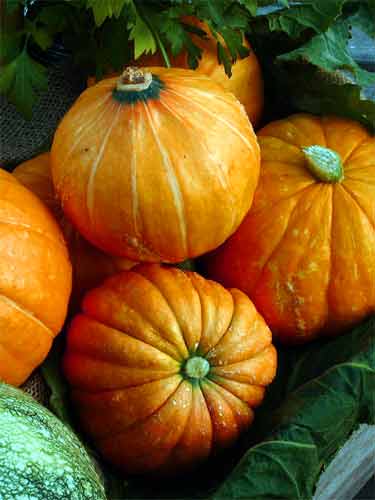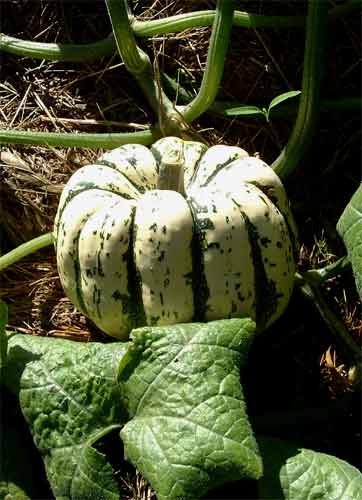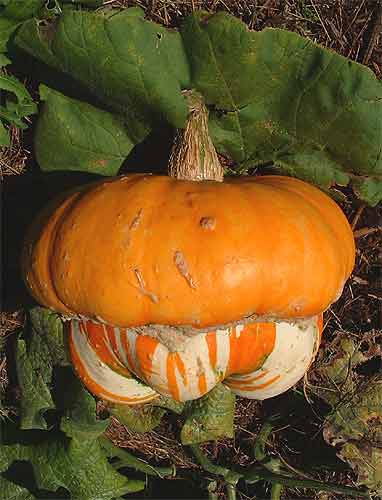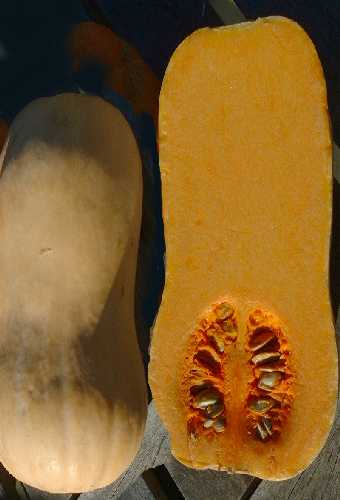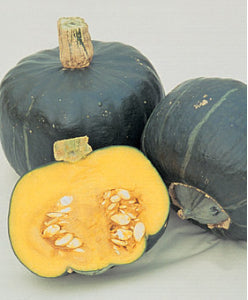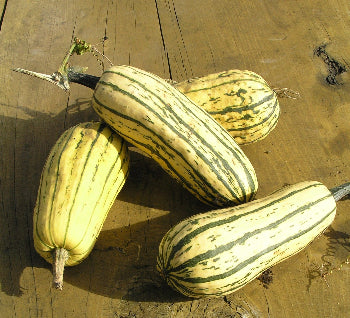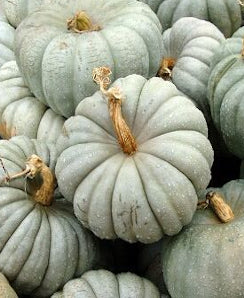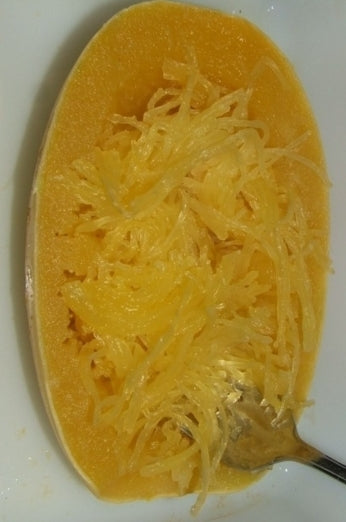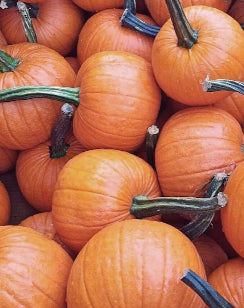How to Grow Pumpkin

The essential guide to growing pumpkin (Cucurbita spp.) from seed; with notes on germination, cultivation, harvest and even kitchen uses.
Quick guide to the main species & their kitchen personalities:
- Cucurbita pepo – Delicata, acorn/sweet-dumpling, spaghetti & many “bush” pumpkins. Flesh is mildly sweet and best roasted, stuffed or spiralised (spaghetti). Thin skins mean they store only a couple of months but need no curing.
- Cucurbita maxima – Kabocha/buttercup, red kuri, hubbards and Queensland Blue–type pumpkins. Dense, deep-orange flesh with a rich, chestnut-sweet flavour that shines in soups, baking and gnocchi. Most need 10-14 days of warm curing and will hold 4-6 months.
- Cucurbita moschata – Butternut and its kin. Tan skin, small seed cavity and a nutty, very sweet flavour perfect for roasting, purées and desserts. The strongest and hardiest of the pumpkin vines. The pumpkins once cured for 10-14 days, store 4-6 months or more.
- Cucurbita argyrosperma (Cushaw) & other specialty types – Often used for pies or stock feed; tolerate heat and humidity but are less common in Australian gardens.
Seeds per Gram: ~4 – 10 seeds (varies with variety size).
Germinating Temperature: 21 – 35 °C; seed sprouts in 5 – 14 days when soil stays warm and moist.
Feed Requirements:
- Heavy feeders.
- Spread 3 cm of well-rotted manure or compost and a sprinkling of blood and bone over the bed and dig/fork it in.
- Side-dress with mature compost or a nitrogen-rich liquid feed when vines begin to run and again at early fruit-set.
- Maintain even moisture to avoid blossom-end rot and split fruit.
Growing Notes:
Climate & Timing
- Night-time minimum should remain above 12 °C; protect early sowings with row covers or cloches.
- Temperate & cool zones: direct-sow or transplant after the last frost, typically Oct–Nov.
- Sub-tropics: sow Aug–Sept or Feb–Mar to avoid the wet-season disease pressure.
-
Tropics: sow during the dry season (Apr–Jul).
Spacing & Depth
- Direct-sow 2 cm deep.
- For an early start in cooler areas sow indoors into large pots for transplanting once frosts have passed and soil warms. Do not let seedlings get too big before tansplanting - they grow fast!
- Bush & small-fruited types: 1 m between plants, 1.5 m between rows.
- Large vining types: “hills” of 2–3 seeds, thin to the strongest, spaced 1.5–2 m apart with 2.5 – 3 m between rows (or train along a sturdy trellis).
Variety Selection
- Choose species that suit your climate and storage goals:
- pepo for quick eating,
- moschata for resiliance to pests and long keeping pumpkins,
- maxima for rich flavour and cool-climate performance.
General Care
- Mulch well to retain moisture and keep fruit off the soil.
- Hand-pollinate early blooms if bee activity is low.
- Prune rampant vines lightly to limit plant to 2–3 main runners for larger fruit.
Common Problems & Pests
- Pumpkin beetles & cucumber moth larvae – exclude young plants with insect mesh; spot-spray with pyrethrum if thresholds are exceeded.
- Squash bugs & aphids – squash egg masses, encourage ladybirds, apply eco-oil.
- Powdery mildew – improve airflow, avoid overhead watering, apply sulphur or potassium bicarbonate.
- Poor fruit-set – usually low pollinator activity; hand-pollinate using a small paint-brush.
- Vine borers (rare in C. moschata) – slit stem, remove grub, then bury wounded section to re-root.
Crop-rotate every 3–4 years and remove vines after harvest to reduce disease carry-over.
Harvesting Notes
When to Harvest
- Fruit is mature when the rind resists a fingernail and the stem corks over.
- Leave 5–10 cm of stem attached; harvest before hard frosts (< –2 °C) as can can scald fruit.
How to Harvest
- Cut with clean secateurs or a pruning saw; avoid lifting by the stem.
- Handle gently to prevent bruising.
Curing, Storage & Use
- No-cure types (C.pepo): eat after a 2- to 4-week ripening period; store up to 3 months at 12–15 °C, 50–70 % RH.
- Cured types (C.maxima & C.moschata): cure 10–14 days at 27–32 °C with good airflow, then store 4–6+ months at 10–15 °C.
- Turn fruit monthly and discard any showing soft spots.
Tip: Roasted pepitas (pumpkin seeds) are high in zinc and make a great garden-snack while you wait for the vines to die back!
Enjoy growing pumpkins. Happy gardening!
Sowing Periods
| J | F | M | A | M | J | J | A | S | O | N | D | |
|---|---|---|---|---|---|---|---|---|---|---|---|---|
| Cool | ||||||||||||
| Temperate | ||||||||||||
| Sub-Tropical/Tropical |
Filters
19 products
Pumpkin 'Crookneck'
Sale price$3.75
PUMPKIN 'Golden Nugget'
Sale price$3.75
Pumpkin 'Jap'
Sale price$3.75
PUMPKIN 'Queensland Blue'
Sale price$3.75
PUMPKIN 'Sweet Dumpling'
Sale price$3.75
PUMPKIN 'Turk's Turban'
Sale price$3.75
PUMPKIN 'Waltham Butternut'
Sale price$3.75
Pumpkin ‘Baby Blue’
Sale price$3.75
PUMPKIN ‘Buttercup’
Sale price$3.75
PUMPKIN ‘Delicata’
Sale price$3.75
PUMPKIN ‘Gem Squash’
Sale price$3.75
Pumpkin ‘Gunsynd’ F1
Sale price$3.75
PUMPKIN ‘Pink Banana Jumbo’
Sale price$3.95
PUMPKIN ‘Red Kuri’
Sale price$3.75
Pumpkin ‘Small Sugar’
Sale price$3.75
PUMPKIN ‘Spagetti Squash’
Sale price$3.75
PUMPKIN ‘Spookie’
Sale price$3.75
Pumpkin ‘Styrian Hulless’
Sale price$3.75
Pumpkin/Squash ‘Potkin’ F1
Sale price$4.50

